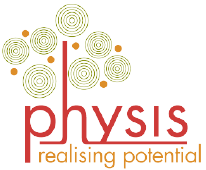In my previous blog, I discussed the benefits of organizations developing the power of peer coaching. In this article, I discuss another lesser-used approach in coaching – the power of reverse coaching.
What is Reverse Coaching
Reverse coaching also goes by the name of reverse mentoring. Often it is seen that coaching happens when a junior is coached by a senior experienced coach. But this is not always the case. Junior members too can infuse fresh perspectives and can coach a senior person.
This is especially valid in the areas of technology, social media, newer workplace practices, cultural trends, digital trends, and evolving social dynamics.
General Electric CEO Jack Welch first promoted the method of reverse coaching to help the top management get tech savvy in the 90s. It was done to promote valuable knowledge exchange among the employee groups. Usually, this method employs a younger less experienced individual to mentor a senior individual in an area of expertise. This method of reverse coaching enables us to bridge the generational gap within the organization.
Example 1: I Got Reversed Coached for Technology
As an entrepreneur in my 50s with very little social media exposure I am reverse coached by my team and my coach too. Both are much younger and more skilled in many areas of social media, technology, and content.
I know of many software project managers who have veered away from technology and more into people management. This makes their tech competence a bit rusty. I know of managers asking for quick ‘capsule tech learning’ sessions from their junior team leads.
Reverse coaching is not about just a few instances. It can be structured as a mini program for upskilling. For reverse coaching to succeed the following criteria are essential.
There must be a clear definition of the goals. The knowledge that is going to be imparted and the skill that is going to be learnt must be defined before the start of the program.
An open mindset on both sides. The participants of the program must be willing to take guidance from someone in a lower or lesser experienced position. The younger person needs to feel equipped to communicate what is needed as a coach in reverse coaching. Coercion is a spanner in the wheel of such a process.
Recommended reading: 10 Practices to Develop a Growth Mindset
A coaching structure should be in place. This includes setting up meetings, topics to be discussed, communication guidelines, and practice work as required.
An effective feedback loop is essential. Both people need to see progress in learning and some measure of success will create both motivation and enthusiasm for both in reverse coaching. If the learning process needs tweaking this can be done too.
Example 2: A Senior Sales Leader Gets Regularly Reverse-Coached
I spoke to a sales leader who shared how she continues to be reversely coached and mentored by junior pre-sales people in her team. She is not strong in technology and she shared that they spend time explaining the product in detail, giving her terminology to include in her pitch, giving her background tech know-how of competitor products, etc. This enables her to pitch her sales and do proposals well.
This reverse coaching is an ongoing process. The leader shared, “I have no ego and it is best I say openly what I do not know.“
Benefits of Reverse Mentoring
1. Meaningful Connections
Reverse coaching builds useful and meaningful relationships within the organization. It promotes significant interaction between employees of different levels and positions there by adding a wholesome quality to the work environment.
2. Technical upgrades and skill transfer
The mentees benefit from getting first-hand knowledge of technical skills and the required upgrades happen. The mentors promote newer technologies and contemporary trends to the mentees that usually the older generation might not be aware of.
3. Fresh Perspectives
Younger individuals in organizations bring in fresh perspectives and newer ideas to innovate as opposed to the established practices that might be in place for a long time in organizations.
4. Mutual learning:
While the senior employee benefits from an upgrade in skills from a junior member the mentors too get an opportunity to learn from the vast bank of experience of the mentees in reverse coaching. The mentors have an insight into leadership and communication skills. This is a mutually beneficial setup.
5. Diversity and inclusion
Reverse coaching provides an opportunity to address diversity issues while at the same time allowing organizations to be more inclusive. In the post-pandemic world, reverse coaching allows individuals to move beyond their own peer groups, take advantage of technology, and learn about future trends in an inclusive environment.
Over to you
Both peer coaching and reverse coaching are powerful tools available to individuals in organizations to enhance their skills and improve the quality of their work productivity. When approached correctly and with proper structures in place both these less explored coaching methods bring immense benefits.
Have you ever engaged in either of these coaching techniques, what was your experience? I would be glad to hear about it.


